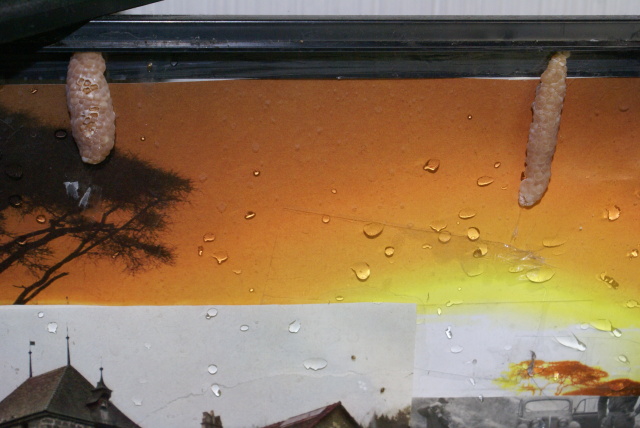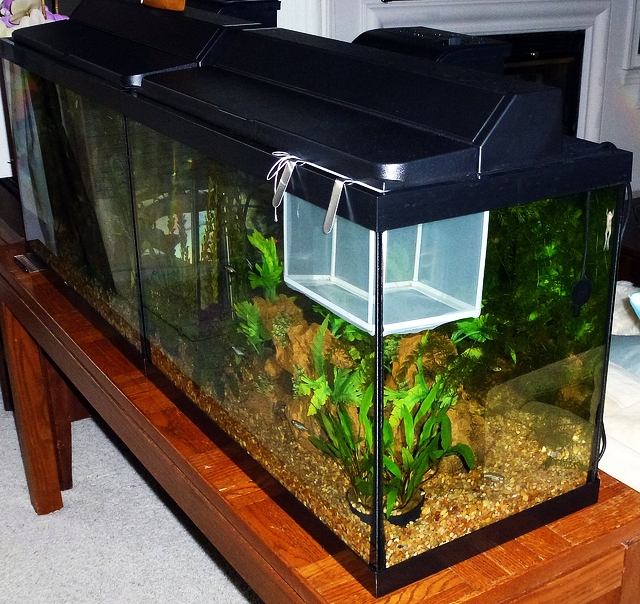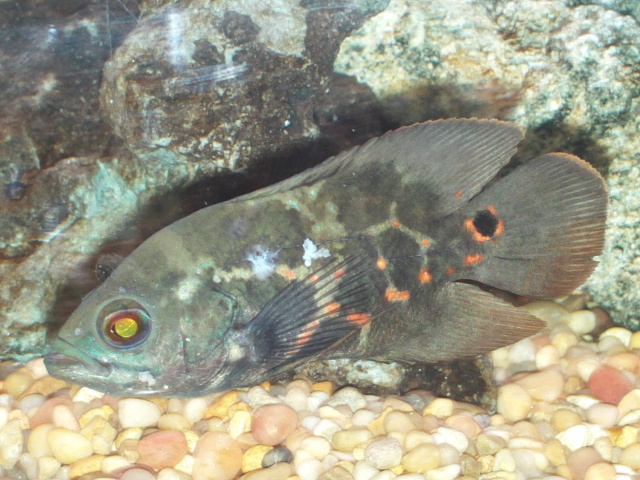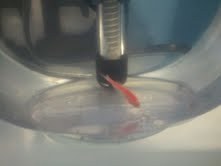QuestionI set my tank up 3 weeks ago (5 gallon)and bought a Plecostomus-small algae eater, 3 Tetra-serpae, and 2 sunset fire platies. 6 days after buying them, one of the platies died. I returned it and they tested my water and the Nitrate was sky high. I got a new Platy. I changed half of the water (I live in a dorm and don't have a bucket large enough to do the whole aquarium at one time and have the filter going. Then that night 2 of the Tetras died. I was worried about over-crowding so I did not get new ones. Now I have very territorial fish, but that is not my issue. I was wondering how long water is suppose to sit before adding it to the aquarium. Since they told me my nitrate is very very high I have been trying to change it more often. I have had many aquariums of many different species (including an aquatic frog) in the past and have waited till it looked like it needed it before doing anything and never had a problem but these fish seem to have some issues. I have always waited at least 24 hours. So, again how long do I wait for the water to sit before adding and how often do you think I should change it. Also, a seperate question, the guy at the store told me that I should wait an hour before adding fish when buying them, but I have always been told 15 mins with them sitting in the water. Thank you!
AnswerHi Jennifer;
Use a good water conditioner and you can use the water right away as long as it is the correct temperature. Water conditioners are instant.
For all established tanks, a 25% water change every week is all that's needed. Changing water a lot right now is necessary because there were too many fish added too soon. Your tank's beneficial bacteria colonies are not "established" yet and is still in the break-in period. It will be for another 3 weeks or so. The nitrites are high as part of that process. If the fish store told you nitrAtes, they are mistaken. Nitrates are the final result of the biological process of "cycling" and your tank just isn't there yet. Ammonia is the first toxin, it converts to the toxin nitrite, and then nitrite converts to the much lower in toxicity nitrate. The beneficial bacteria does this work for you. They live in the filter, on the gravel and even on tank surfaces like decorations and plants.
A new tank can only have one inch of fish for every ten gallons while it's breaking in. You might have been okay with a simgle one-inch fish and a water change every 3 or 4 days until the process is over, but yours has way more than that! Yikes! You may need to replace water every day for a couple of weeks until it's done. Your other tanks probably did fine before because they got through the break-in okay and/or were bigger tanks. Smaller tanks require much more maintenance because the water volume is so limited. Anything starts to get nasty and you have to remedy it right away. In a bigger tank you have "more room" for mistakes and problems.
Here is a link to my article on new tanks to help you through the rest of that crazy process;
http://www.xanga.com/Expert_Fish_Help
The serpaes and the platies may be okay together, but the plecostamus really can't stay in there. The regular types of pleco get to be a foot long and will start eating your fish at night way before that. Even the smaller types of plecos, the dwarf varieties, get six inches long. Just too big and will max out the population so you can't have any more fish than just one dwarf pleco. Your tank can support up to a total of 5 inches of small community fish. The serpaes and platies are about all it can handle safely. The serpaes really need a bigger tank to distribute their energy but watch and see how they act. In such close quarters they may get a bit nasty. Just watch the little devils!
To add fish to your tank, just float them on the top of the water for ten or fifteen minutes. During that time, mix a little bit of tank water into the bags about every 5 minutes. Leaving them to float for an hour is really not the best idea in my opinion. The water in the bag will be severely lacking oxygen by that time. There's really no benefit to leaving them that long anyway. It only takes 5 to 10 minutes for the bag temperature to equalize to the tank. That's why we float them. Temperature equalization. Mixing water into it from the tank gives them time to adjust to water chemistry like pH, hardness, etc. When the floating is done, net the fish from the bag and release the fish into the tank, but throw away the bag water. It contains tons of ammonia and stress hormones and you don't want that in your tank.
At Your Service;
Chris Robbins

 wierd egg sack in newt tank
Question
eggs
I have a firebelly newt tank, with apple
wierd egg sack in newt tank
Question
eggs
I have a firebelly newt tank, with apple
 my molly had babies
QuestionI have an 39 gallon tank with 4 mollies 2 tetra
my molly had babies
QuestionI have an 39 gallon tank with 4 mollies 2 tetra
 Sick Oscar fish?
Question
Sick?
Hi,
I have an oscar fish that was black
Sick Oscar fish?
Question
Sick?
Hi,
I have an oscar fish that was black
 high PH levels
Question
Our 90 Gallon Tank
We recently set up at 90 ga
high PH levels
Question
Our 90 Gallon Tank
We recently set up at 90 ga
 fish disease?
Question
Fish tail
Hello,
I have a 20 gallon tank that
fish disease?
Question
Fish tail
Hello,
I have a 20 gallon tank that